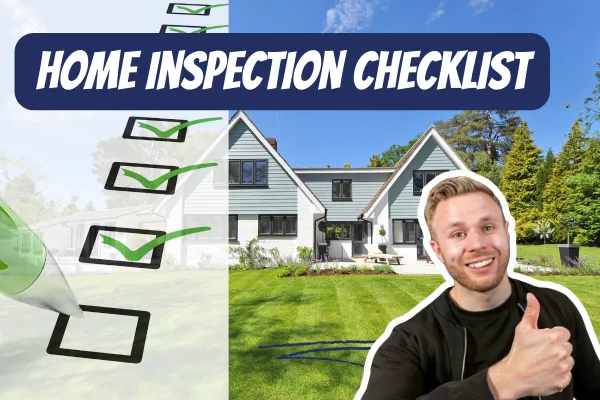
Home Inspection Checklist for Lancaster PA Buyers
Home Inspection Checklist for PA Buyers
Thinking about buying a house in Lancaster, PA? Whether you're a first-time homebuyer or relocating to beautiful Lancaster County, a thorough home inspection is one of the most important steps in your journey. The Lancaster PA real estate market includes a mix of charming historic homes, modern new builds, and everything in between—so knowing what to look for during a home inspection is key to making a smart investment.
In this guide, we’ll walk you through everything you need to know, from the inspection timeline to what should (and shouldn’t) raise red flags, including a free downloadable checklist you can use on inspection day.
How the Home Inspection Process Works in PA
In Pennsylvania, the home inspection typically happens within the first 10 days after your offer is accepted and both parties sign the Agreement of Sale. This period is often called the inspection contingency window, and it gives buyers the right to inspect the property before fully committing.
Here's how it fits into the buying timeline:
Offer Accepted → Clock starts on inspection period
Schedule your home inspection ASAP (many inspectors book quickly)
Attend the inspection with your agent
Receive a full written report within 1–2 days
Decide whether to move forward, renegotiate, or walk away
What to Bring & Prepare For on Inspection Day
As a buyer, your role isn’t to inspect the home yourself, but you should be present during the inspection. It’s a great opportunity to learn about your future home and ask questions.
Your home inspection team usually includes:
A licensed home inspector
Your real estate agent
You (the buyer)
Bring:
Notebook or phone for notes/photos
Questions for your inspector
Detailed Home Inspection Checklist
Here’s what a typical Pennsylvania home inspector will evaluate:
Exterior
Roof (shingles, flashing, leaks)
Siding, paint condition
Gutters/downspouts
Grading/drainage away from the house
Foundation cracks or settling
Interior
Windows and doors (function & seal)
Floors, ceilings, and walls
Attic insulation and ventilation
Evidence of moisture or mold
Electrical
Outlets and switches working properly
GFCI outlets in kitchens, baths, exterior
Breaker panel labeled and clean
No exposed wiring
Plumbing
Faucets, toilets, showers
Drainage and water pressure
Hot water heater age and function
Signs of leaks or pipe corrosion
HVAC (Heating, Ventilation, A/C)
Furnace and A/C operation
Air filter cleanliness
Ducts and vent airflow
Thermostat functionality
Appliances (if included in sale)
Stove/oven
Dishwasher
Refrigerator
Washer/dryer
Environmental Hazards
Radon test results
Mold/mildew signs
Pest or termite evidence
Asbestos (especially in older homes)
Safety Concerns
Smoke & CO detectors working
Secure stair railings
Trip hazards (thresholds, uneven flooring)
Bedroom egress windows
How to Interpret the Home Inspection Report
After the inspection, you’ll get a detailed report that may look intimidating at first—don’t panic! Most homes have a list of minor issues.
Here’s how to evaluate:
Major safety issues: Prioritize these (electrical, structural, environmental)
Code updates: Some older homes aren’t up to current codes but may still be safe
Cosmetic flaws: Usually not dealbreakers
Your agent will help you decide what’s worth negotiating.
What Happens If Issues Are Found?
If your inspector uncovers concerns:
You can negotiate repairs or credits
You can walk away if the issues are dealbreakers
You can accept the home as-is
The PA standard Agreement of Sale includes an inspection contingency, so you’re protected if things go sideways.
Lancaster-Specific Issues to Look Out For
Lancaster County homes have some unique quirks due to age, soil, and climate:
Older homes in the city may have knob-and-tube wiring or stone foundations
Basement moisture is common due to clay soil
Radon is prevalent in many Lancaster County homes—get a radon test!
Historic properties may have restrictions on renovations or repairs
Buying a house in Lancaster PA means being aware of these regional factors before you close.
Should You Hire Specialists for Additional Inspections?
Your general inspector may recommend:
Radon testing
Mold inspection
Pest inspection (termites)
Chimney scope
Septic and well testing (for rural properties)
Lead paint test (homes built before 1978)
Yes, these are added costs—but they could save you thousands later.
How Much Do Home Inspections Cost in PA?
The cost depends on the home’s size, age, and location. In Lancaster PA:
Average range: $400–$700
Add-ons (radon, pest, mold): $100–$300 each
Well/septic or chimney: $150–$300 each
It’s a small price to protect a major investment.
Final Walkthrough Checklist
Before settlement, you’ll do one last walkthrough to ensure the home’s condition hasn’t changed. Bring this mini-checklist:
✅ All agreed-upon repairs completed
✅ Appliances still in place and working
✅ No new damage since inspection
✅ HVAC, plumbing, and electric systems working
✅ House clean and ready for move-in
Conclusion
A professional home inspection gives you peace of mind—and negotiating power—when buying a house in Lancaster PA. Use our checklist to feel confident on inspection day, and don’t forget to ask your agent for guidance every step of the way.
External Resource:
PA Department of State - Home Inspectors
